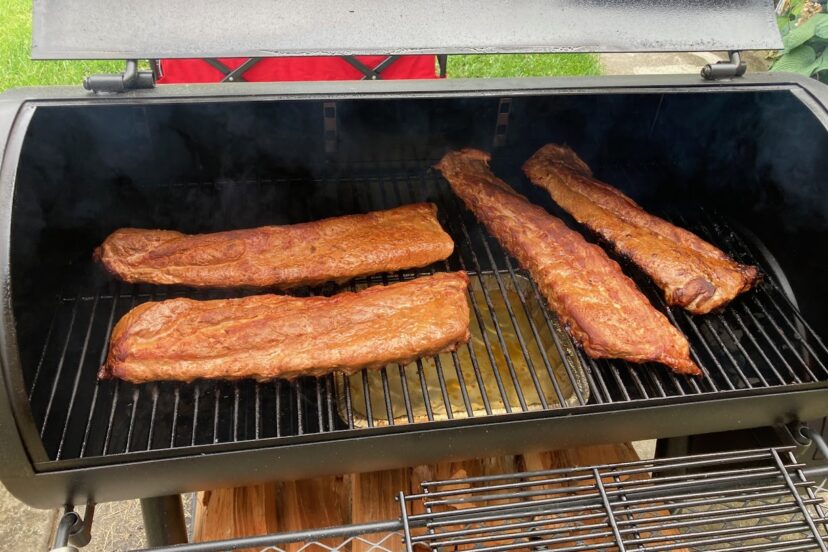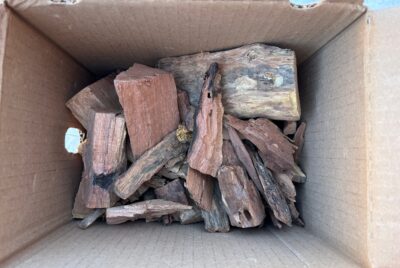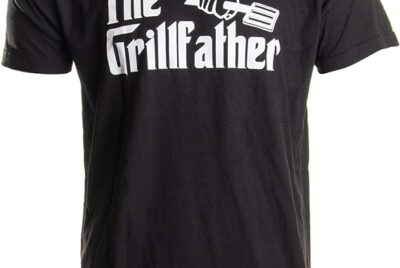The Types of Ribs For Barbeque
As a seasoned (no pun intended) barbeque guy, I can confidently say that the types of ribs you choose for your barbecue can make all the difference in the world. Whether you’re a seasoned rib connoisseur or a newcomer to the world of outdoor cooking, understanding the diverse array of rib options is crucial to creating the ultimate rib-centric feast. Don’t worry, you can do a pork shoulder too!
The Diverse Delights of Pork Ribs
Let’s start with the quintessential types of ribs for barbeque- pork ribs. These succulent, flavorful delights come in a few distinct varieties, each with its own unique charm.
- Baby Back Ribs: These tender, diminutive ribs are often considered the crème de la crème of the pork rib world. With their delicate, melt-in-your-mouth texture and sweet, subtly smoky flavors, baby back ribs are a crowd-pleasing favorite. Their smaller size makes them perfect for portion control and easy handling, ensuring every bite is a delight.
- Spare Ribs: For those who crave a more substantial, meaty rib experience, spare ribs are the way to go. These larger, rectangular-shaped ribs from the belly area pack a bold, beefy punch of flavor. With their generous marbling and chewy-yet-tender texture, spare ribs are the ultimate canvas for a delectable dry rub or tangy barbecue sauce.
- St. Louis-Style Ribs: A versatile compromise between baby backs and spare ribs, St. Louis-style ribs strike a perfect balance. Trimmed of the rib tips and skirt, these rectangular slabs offer an optimal ratio of meat to bone, making them easy to handle and divvy up for serving. Their robust flavor and tender, juicy bite make them a fantastic choice for large-scale backyard gatherings.
Beef Ribs: The Bolder, Beefier Option
While pork ribs reign supreme in the classic barbecue arena, let’s not forget the bold, beefy delights of their bovine counterparts. Think TEXAS RIBS!!
- Short Ribs: These thick, meaty ribs from the chuck or plate region of the cow are the ultimate indulgence for rib enthusiasts. With their rich, intense flavor and fall-off-the-bone tenderness, short ribs are a true rib lover’s dream. Their substantial size and heft make them a showstopper on any backyard barbecue spread.
- Back Ribs: Similar to pork spare ribs in shape and size, beef back ribs offer a heartier, chewier texture and a more pronounced beefy taste. While they may require a bit more work to achieve the perfect level of tenderness, the reward is a rib experience that’s truly unforgettable.
Bone-In vs. Boneless: Choosing Your Rib Adventure
As you navigate the world of ribs, you’ll encounter another crucial decision: bone-in or boneless. Each option presents its own unique advantages.
Bone-In Ribs: Ribs with the bone intact offer an unparalleled depth of flavor and a more authentic, traditional rib experience. The bones not only add structural integrity but also lend a richer, more concentrated taste as the meat cooks. For true rib aficionados, the bone-in version is often the preferred choice.
Boneless Ribs: On the other hand, boneless ribs provide a more convenient and fuss-free dining experience. With the bones removed, these ribs are easier to portion, serve, and enjoy without the hassle of navigating around the bones. They also tend to cook more quickly and evenly, making them an appealing option for busy weeknight meals or large gatherings.
Selecting the Best Types of Ribs for Barbeque
When it comes to choosing the perfect ribs for your backyard barbecue, there are a few key factors to consider:
- Flavor Profiles: Do you prefer the sweet, smoky nuances of pork ribs or the bold, beefy essence of beef ribs? Familiarize yourself with the distinct flavor profiles of each rib variety to determine which best suits your palate and the overall theme of your barbecue feast.
- Budget and Portion Sizes: Ribs can vary significantly in price, depending on the cut and quality. Take the time to evaluate your budget and the number of guests you’ll be serving to ensure you select the right amount and type of ribs to satisfy everyone’s appetites.
- Tenderness and Marbling: Look for ribs with a nice balance of tenderness and marbling. The intramuscular fat in well-marbled ribs will melt during the cooking process, resulting in a moist texture that’s simply irresistible.
Up Your Rib Game when choosing the Types of Ribs for Barbeque
Now that you’ve mastered the art of rib selection, it’s time to explore the techniques that will elevate your backyard barbecue to new heights.
Low and Slow Smoking: For the ultimate in rib tenderness and flavor, the low and slow smoking method is the way to go. By cooking the ribs at a relatively low temperature (around 225-250°F) for several hours, you’ll unlock a deep, smoky essence and a meat-falling-off-the-bone texture that will have your guests raving. You can use any of the various barbeque pits that we recommend… OH, and get at least one of these!
Grilling for a Caramelized Finish: If you’re short on time or prefer a bit of char and caramelization, grilling your ribs is a fantastic option. The high heat of the grill will create a delectable, crusty exterior while keeping the interior juicy and flavorful. Just make sure that you use a Weber– just trust me!
Mastering Marinades, Rubs, and Sauces: Don’t underestimate the power of seasonings and sauces when it comes to elevating your rib game. Experiment with bold, flavorful rubs, tangy marinades, and zesty barbecue sauces to find the perfect flavor combinations that will have your guests begging for more. You can even get a little nutty and go with something from Hawaii!!
Whether you’re a rib novice or a seasoned backyard grill master, embracing the diverse world of ribs and mastering the techniques to cook them to perfection will undoubtedly make you the star of your next barbecue extravaganza. So fire up those grills, grab your favorite rib variety, and get ready to delight your taste buds and impress your guests with your rib-rocking skills!
Frequently Asked Questions
How many pounds of ribs should I plan per person when hosting a barbecue? As a general rule, plan for about 1/2 to 3/4 pound of ribs per person for a main course. If you’re serving other meats or have plenty of sides, you can reduce this to about 1/3 pound per person. Remember, it’s better to have leftovers than to run short!
What’s the biggest difference between baby back ribs and spare ribs? Baby back ribs come from the top of the rib cage near the spine and are shorter, more curved, and typically more tender. Spare ribs come from the belly area, are larger, flatter, and have more meat between the bones. Baby backs tend to be more expensive but cook faster, while spare ribs offer more meat for your money but require longer cooking times.
Should I remove the membrane from the back of the ribs before cooking? Yes, I highly recommend removing the membrane (also called the silver skin) from the back of the ribs before cooking. This tough layer can prevent seasonings from penetrating the meat and becomes chewy when cooked. Simply slide a butter knife under the membrane to loosen it, grab with a paper towel, and peel it off in one piece.
What’s the “3-2-1 method” for smoking ribs, and does it work for all types of ribs for barbeque? The 3-2-1 method involves smoking ribs for 3 hours unwrapped, 2 hours wrapped in foil with liquid, and 1 hour unwrapped again with sauce. While this works well for spare ribs, you’ll need to adjust the timing for baby back ribs (try 2-2-1 instead) as they’re smaller and cook more quickly. Beef ribs might need even longer cooking times due to their size and composition.
Can I prep my ribs the day before cooking them? Indeed you can! You can remove the membrane, apply the dry rub, and wrap the ribs tightly in plastic wrap up to 24 hours before cooking. This not only saves time on cooking day but also allows the seasonings to penetrate the meat more deeply. Just be sure to keep them refrigerated and bring them to room temperature about 30 minutes before cooking.






